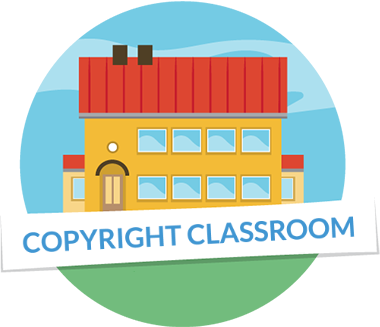Comic book project
Objective
The aim of the comic book project is to allow students to explore and express themselves and their environment through comics. Another goal is to encourage students to use visual means and other methods to generate and present information and ideas. The project also covers the basics of copyright and how it applies to the students’ own work.
This comic book project ties into the NCCA’s Senior Cycle Key Skills: information processing, communicating, being personally effective, working with others, and critical and creative thinking. Specifically, it supports multiliteracy, visual and linguistic production and the use and interpretation of different techniques. To expand the project’s educational value, it can be carried out as a collaboration between different subjects. It is particularly suitable for teaching art and English/Irish.
Duration: 2-3 sessions
You will need:
- Comic books and graphic novels
- Computers/tablets for playing the Copyright Classroom games and searching for materials
- Paper
- Drawing implements: pencils, fine-tipped markers, erasers, rulers, markers, coloured pencils, watercolours, etc., for colouring the comic
- Comics can also be drawn on a computer/tablet
Tools related to copyright can be found in:
Copyright Classroom’s online resources (games about copyright, checklists and materials for teachers)
Learning objectives:
- Acquaint students with different ways to communicate through images and to use different ways to influence through images in their own work.
- Inspire students to produce and use different kinds of text and express their observations and thoughts through images.
- Encourage students to develop their language skills and imagination by expressing themselves through text and images.
- Inspire students to try different techniques and practise expressing themselves in a variety of ways through text and images.
- Help students understand the basic principles of copyright, their own rights as creators, and the use of the work of others with respect for copyright.
Key skills: communicating ideas through descriptive writing and visual elements; an opportunity to test personal effectiveness; working with others by developing a comic book as a group.
NB: The written and visual elements of this project involve very different skills. Some students who are good in one area will find great difficulty with the other. It is important to be sensitive to this; pairing visual and verbal students to collaborate could be one way to draw on the strengths of each while developing the Key Skill of working with others.
1. FOCUS ON THE SUBJECT AND CHOICE OF THEME
A comic is a literary and visual artwork protected by copyright. The creator owns copyright to their comic.
What is a comic?
In a comic, text and images are combined to make up a story. There is usually a character who is the main protagonist in the series. The series progresses from panel to panel. Comics are generally read from left to right. Japanese Mangas, which are also popular in Ireland, are read from right to left.
What is copyright?
Copyright means that, as the creator, you have the right to decide how you want to share or publish your work and how others may use it. Copyright allows creators such as writers, actors, singers, composers, and visual artists to receive compensation for their creative work, enabling them to create new works for the enjoyment of us all. More information about copyright can be found in ‘Copyright Basics’ from Copyright Classroom.

Activities:
- Discuss what a comic is and what it means for a comic artist to have copyright in their work.
- Learn about copyright by playing the games on Copyright Classroom’s website.
- Choose five different comics and find out who the copyright holders are.
- Write a letter to your favourite comic artist. Comic artists can be contacted through publishers, and many also have their own websites where you can find an email address. Ask the comic artist what copyright means to them. The whole class can also write a joint letter.
- Think about themes for your own comic. Choosing a theme can be done as homework.
2. IDEAS AND SCRIPT // CREATING A STORY – GUIDANCE TO GIVE STUDENTS
Creating a comic starts with developing a plot and a story and creating a character. Characters in a comic can be humans, animals or mythical creatures. First, write a synopsis of the story. The story should have a beginning (where everything starts), a middle (turning point, surprise), and an end (where everything is wrapped up). These are placed in the panels of the comic.
Considerations: Are your ideas original or are you copying a comic you have read? Are you telling a story that is interesting and engaging? How long will your comic story be?
Activities:
Ask your students to:
- Think about what your leading character is like and what kind of personality they have. Draw different facial expressions and body postures for your character. You can also describe your character with words.
Browse through different comic books and graphic novels. Consider together how the main characters/figures are depicted, such as what facial expressions and gestures they make, how different movements are illustrated, what symbols and speech bubbles are used, and on the other hand, in which situations the images speak for themselves, and speech bubbles are not needed. - Think about what the comic is about. You can create a mind map or come up with ideas by drawing. For example, draw individual pictures about the topic and arrange them in the desired order. Think about how the story could progress.
3. DRAWING A COMIC: GUIDANCE FOR STUDENTS
Remember that you don’t need to be a great artist to draw a comic book. Characters can be very simple shapes if that is what you are comfortable with.
When drawing a comic, start by sketching the panels. You can play with the panels – not all panels need to be regular or the same size, or even rectangular. Effects can be created by omitting the outlines of a panel. You can draw your own panels or print ready-made ones.
The original size of a drawn comic is often larger than the size in which it is later published. In a larger panel, you can draw more detail and it is easier to write the text for the speech bubbles neatly. You should first write in the text and then draw the speech bubbles.
Sketch the panels and speech bubbles with a pencil. Finally, you can complete your work with a fine-tipped marker or brush and colour the images and panels if you want. By trying different tools, you will find the drawing method you like best.

Activity:
Consider how the story progresses, for example, in films. What cuts have been used? How is the image cropped? The same methods work well in comics too.
Respect the copyright of others
When you draw images or take photographs for a comic, you own the copyright of those images. If you want to use an image created by someone else, you usually need the creator’s permission. For example, different comic characters, animated characters, and other figures are works protected by copyright. They may also be trademarked.
The ICLA copying licence will permit most uses provided your comic book will not be published beyond your school/college.
4. PUBLICATION AND EVALUATION
Consider where and how you want your students’ work to be published. If they have used works by others, such as images, check that they have all the necessary permissions for use and publication.
The students must give permission for their comic book to be shared beyond the classroom, and if they are minors (under 18) the permission of their parents/guardians will be needed also.
If several students create a comic together, it is good to agree in advance on how they can share the work (for example, if one wants to share the comic online, all creators need to give their permission).

Activity:
Make a comic book anthology from the students’ comic strips. You can also make an exhibition of the comics in the classroom or the school/college hall.
Remember to ask the creators, and their parents/guardians if they are under 18, for permission to publish or display their comics.
